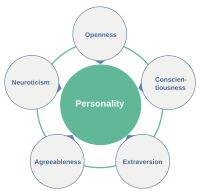
Photo from wikipedia
Public health interventions and health technologies are commonly described as ‘complex’, as they involve multiple interacting components and outcomes, and their effects are largely influenced by contextual interactions and system-level… Click to show full abstract
Public health interventions and health technologies are commonly described as ‘complex’, as they involve multiple interacting components and outcomes, and their effects are largely influenced by contextual interactions and system-level processes. Systematic reviewers and guideline developers evaluating the effects of these complex interventions and technologies report difficulties in using existing methods and frameworks, such as the Grading of Recommendations Assessment, Development and Evaluation (GRADE). As part of a special series of papers on implications of complexity in the WHO guideline development, this paper serves as a primer on how to consider sources of complexity when using the GRADE approach to rate certainty of evidence. Relevant sources of complexity in systematic reviews, health technology assessments and guidelines of public health are outlined and mapped onto the reported difficulties in rating the estimates of the effect of these interventions. Recommendations on how to address these difficulties are further outlined, and the need for an integrated use of GRADE from the beginning of the review or guideline development is emphasised. The content of this paper is informed by the existing GRADE guidance, an ongoing research project on considering sources of complexity when applying the GRADE approach to rate certainty of evidence in systematic reviews and the review authors’ own experiences with using GRADE.
Journal Title: BMJ Global Health
Year Published: 2019
Link to full text (if available)
Share on Social Media: Sign Up to like & get
recommendations!